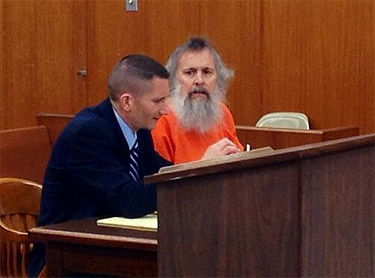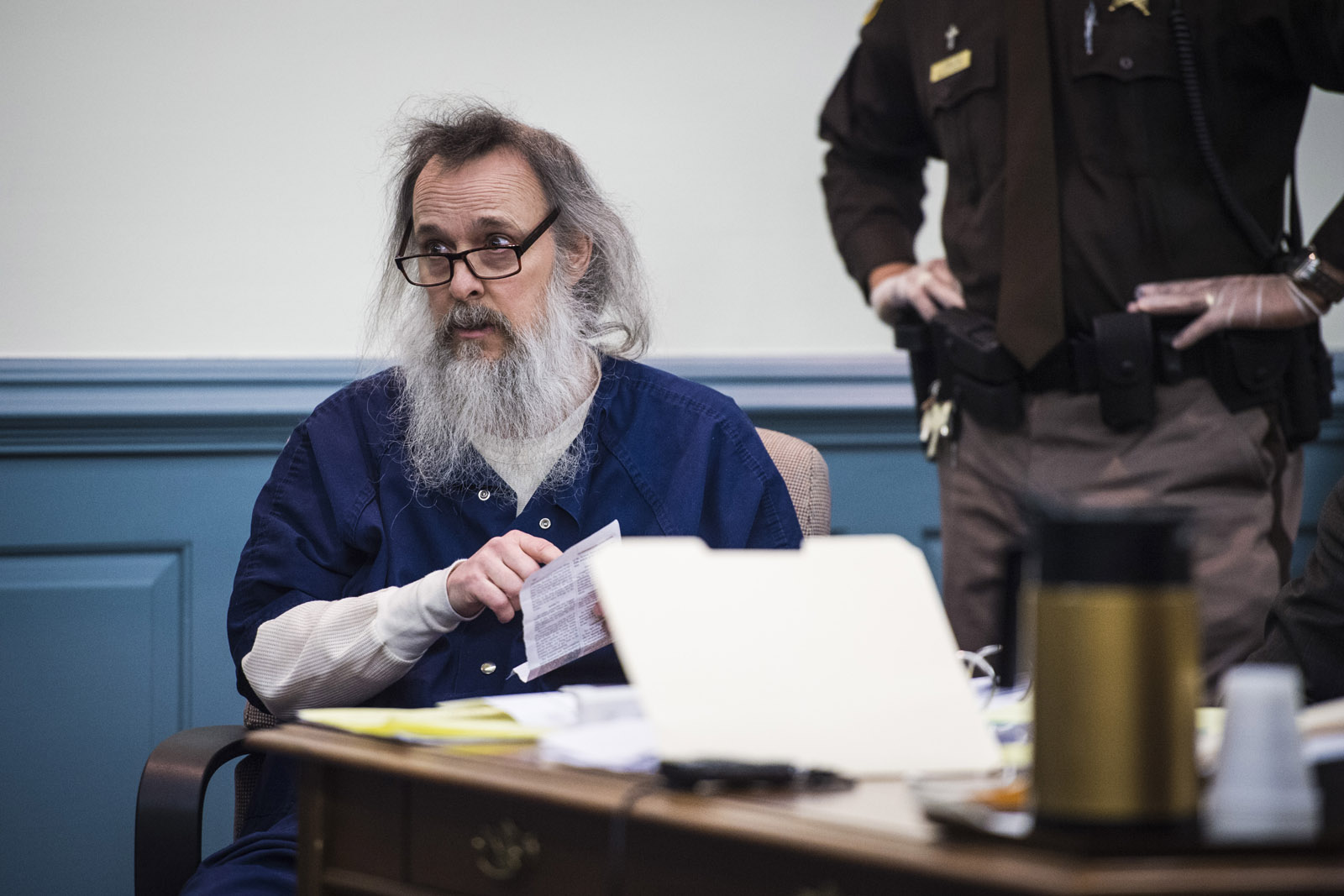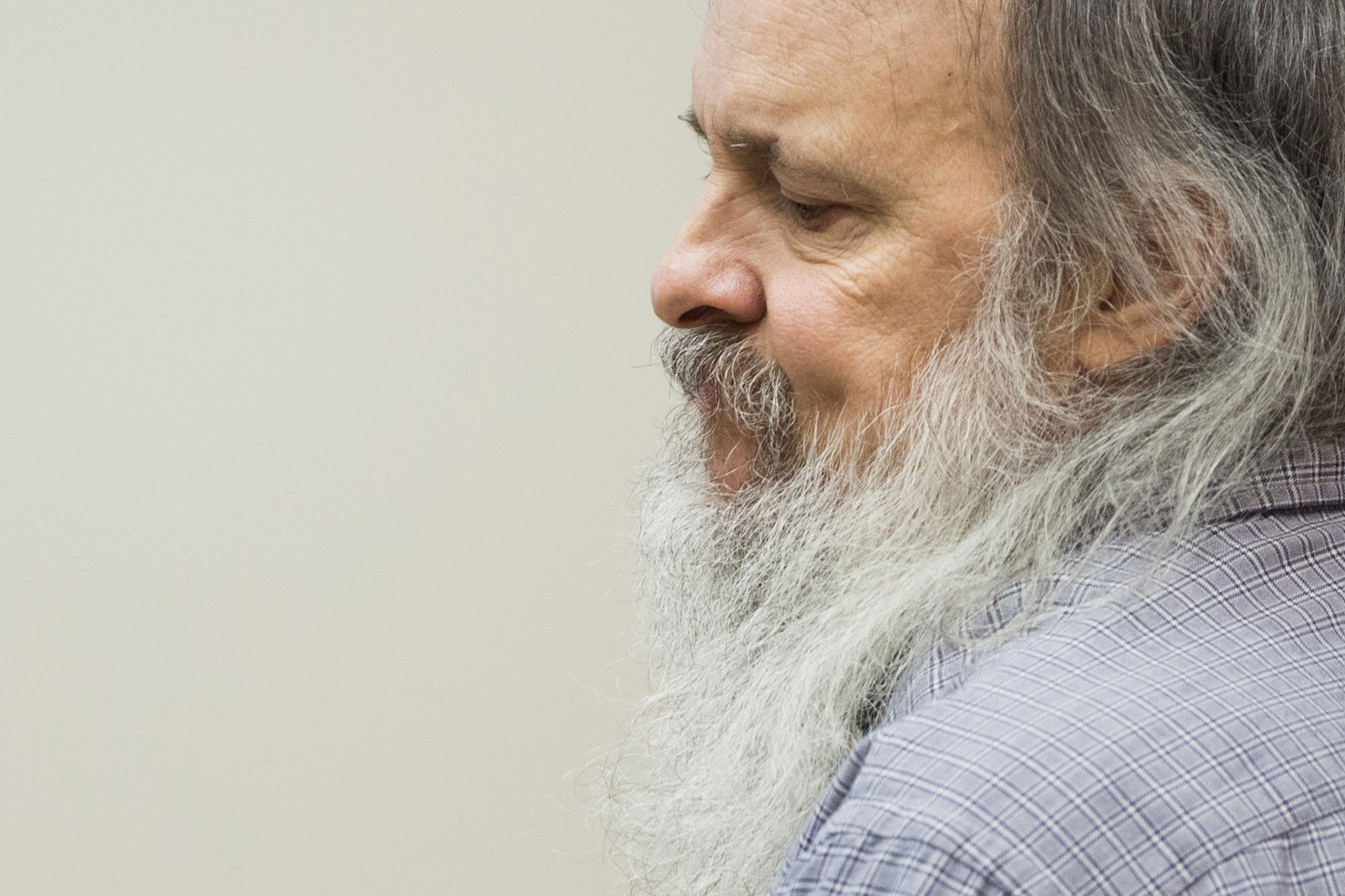FAIRFAX, Va. – Prosecutors and defense attorneys for accused killer Charles Severance painted a picture of two very different men in their initial statements to a Fairfax County jury Thursday morning: one fueled by anger and mistrust, and the other a history-loving man who struggled from a mental disorder.
Severance is charged with killing three Alexandria residents – Nancy Dunning, Ruthanne Lodato and Ron Kirby – between 2003 and early 2014, crimes that terrorized the community. He faces life in prison if convicted.
Ballistic evidence, witnesses and surveillance images that purport to show Severance was near the three victims before their deaths, and the interpretation of Severance’s own writings will be contested during the trial, which is expected to last six weeks.
Prosecutors say that Severance, fueled by hatred for law enforcement and Alexandria’s elite class, killed the three victims using his preferred gun of choice and what they described as a rare type of ammunition almost never used in crimes.
Prosecutors focused repeatedly on the type of ammunition used in the crimes: .22-caliber, long rifle, plain lead, hollow point, cyclone or subsonic bullets made by Remington.
Investigators believe three different mini revolvers made by North American Arms were used in the crimes – one for each killing.
Severance wrote about this type of gun multiple times; he purchased one in 2003 and later urged his girlfriend to buy two.
The defense, however, said that the ballistic evidence doesn’t prove Severance was the killer. The bullets used in the three killings are commonly available nationwide and more than a billion such bullets have been produced since the late 1990s.
And, millions of guns could use the .22-caliber ammunition, not just the mini revolver that prosecutors say Severance used to kill all three victims, defense attorney Joe King said.
There is no DNA evidence that would link Severance to any of the three crimes and there is no indication that Severance fled Virginia after Lodato was killed, King said.
Severance suffered from bouts of eccentric, bizarre behavior with paranoid tendencies. He thought he was being persecuted by the City of Alexandria. Because of that, it should not be surprising that he would not want to speak with police or would seem to make strange choices, according to the defense.
Severance used a credit card in his name at a motel in Maryland and took three days to travel the five hours to Wheeling, West Virginia, where he was arrested. He also made no effort to alter his appearance. Rather than fleeing, Severance headed to West Virginia for historical research after his girlfriend kicked him out of her Ashburn home, King said.
Severance loved early American history and enjoyed visiting historic sites in West Virginia and Ohio, where he had friends and traveled several times during the past decade, King said.
His voluminous writings – four binders full were submitted as evidence in the case – are littered with references to historical events, sites and philosophies in addition to memories of his son Levite, and rules and plans for historic-themed games. The writings express more than just anger, King told the jury.
In those thousands of pages, Severance never wrote about Nancy Dunning, Ron Kirby or Ruthanne Lodato or their families. Prosecutors argued, however, that the writings are focused on violence and revenge killings, and document Severance’s motivation for the killings: his hatred of police, courts and “Alexandria elite.”
David Lord, deputy commonwealth’s attorney for Alexandria, told the jury that the writings contain hundreds of references that glorify violence or justify revenge killings.
The first round of evidence and witnesses focused on the Lodato investigation, which provided police with clues that helped shed light on both Kirby and Dunning’s deaths.
The day was punctuated by emotional testimony from the lone survivor of the attacks, Dorcas Franco, who cared for Lodato’s 89-year-old mother. Franco was shot two times in the arm and ran into her attacker, who knocked her backwards. She described running out of the house for help and coming back to find Lodato on the floor, bleeding.
Franco broke into tears as she was being questioned about a sketch that depicted her attacker. The sketch was released publicly and resembles Severance.
Franco identified Severance as her attacker despite attempts by the defense to point out discrepancies between her descriptions to police and court previously.
Defense attorneys asked Franco and several other witnesses about the beard length and bushiness of the man who shot her.
The attorneys noted several times that Severance has worn his long, gray beard the same length for some time. Severance, wearing a brown, long-sleeve button down shirt, stared straight ahead during most of the day, periodically conversing with his team of lawyers.
A neighbor testified that she had seen an older white man with a beard wearing a tan jacket three times in the days and weeks before Lodato’s murder. When the sketch was released, she recognized him as the same man.
A woman who runs a cleaning service in the neighborhood told police that she had seen Severance driving out of the Jefferson Park neighborhood. He had run a stop sign and was speeding. She didn’t report the erratic driving until several weeks after Lodato’s murder when she saw a news report about Severance’s arrest and recognized him as the driver.
She said he had been driving a red Ford Escort – the same type of car captured by a neighbor’s surveillance camera and that Severance had been driving when he was arrested.
The trial is set to resume Friday.







